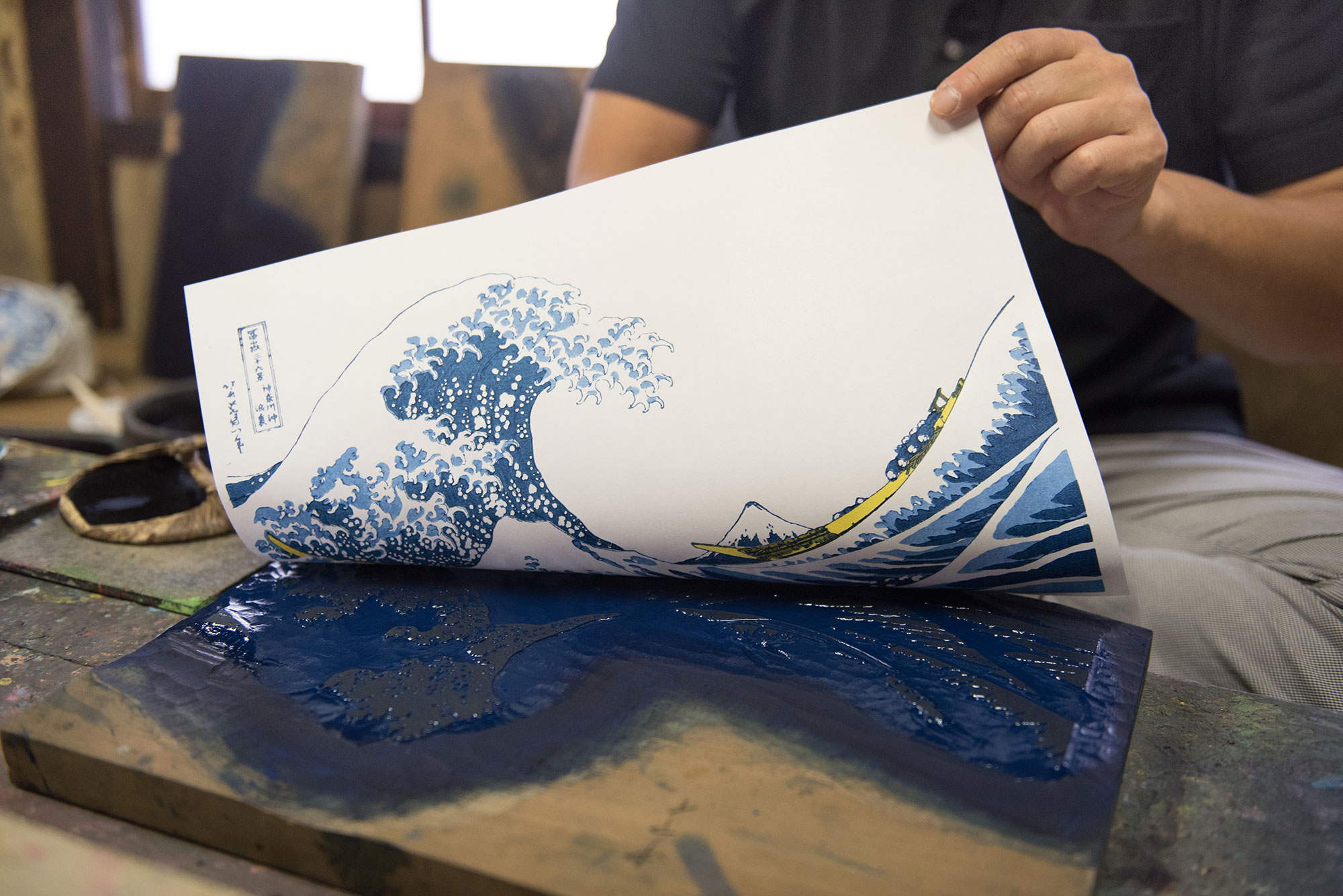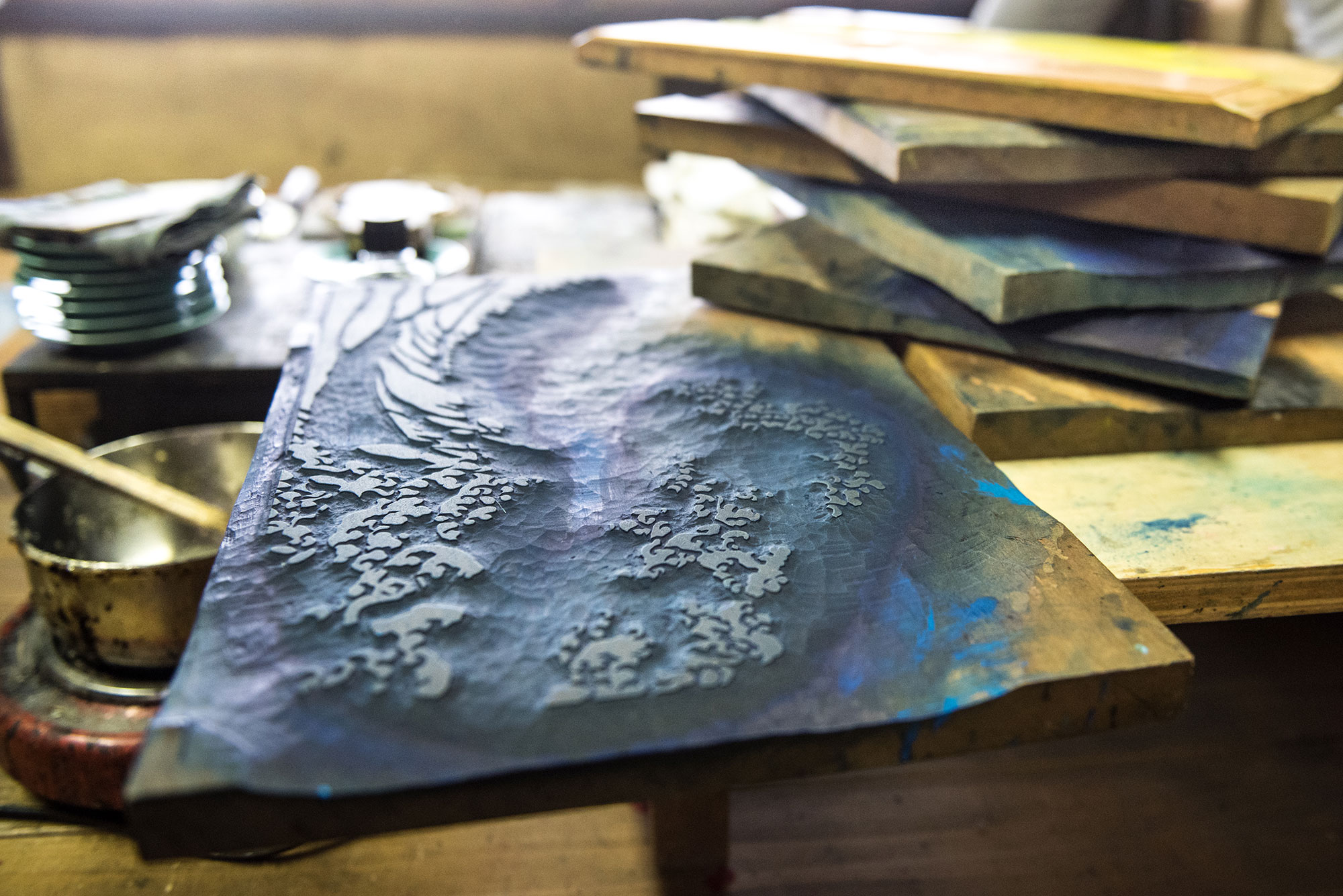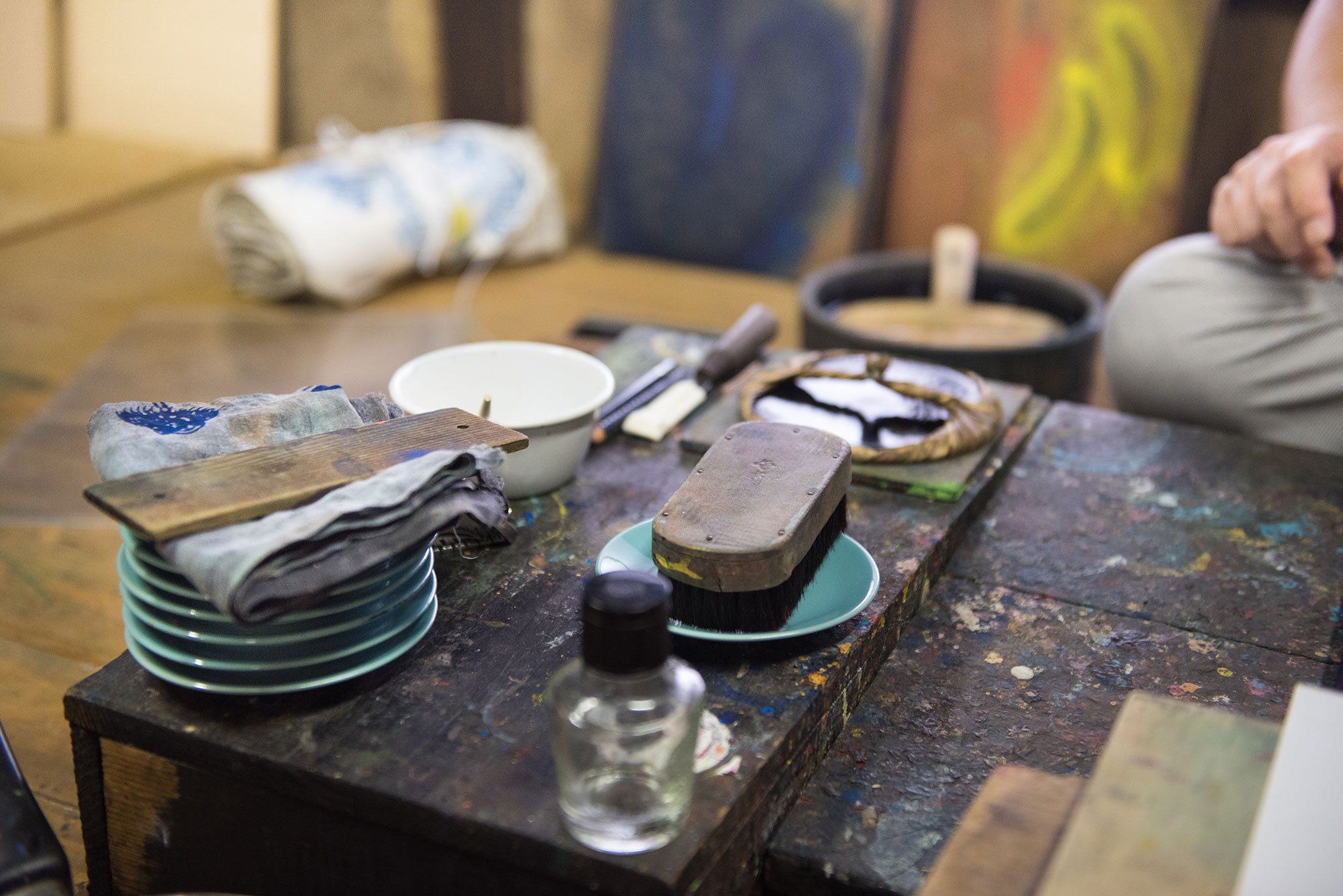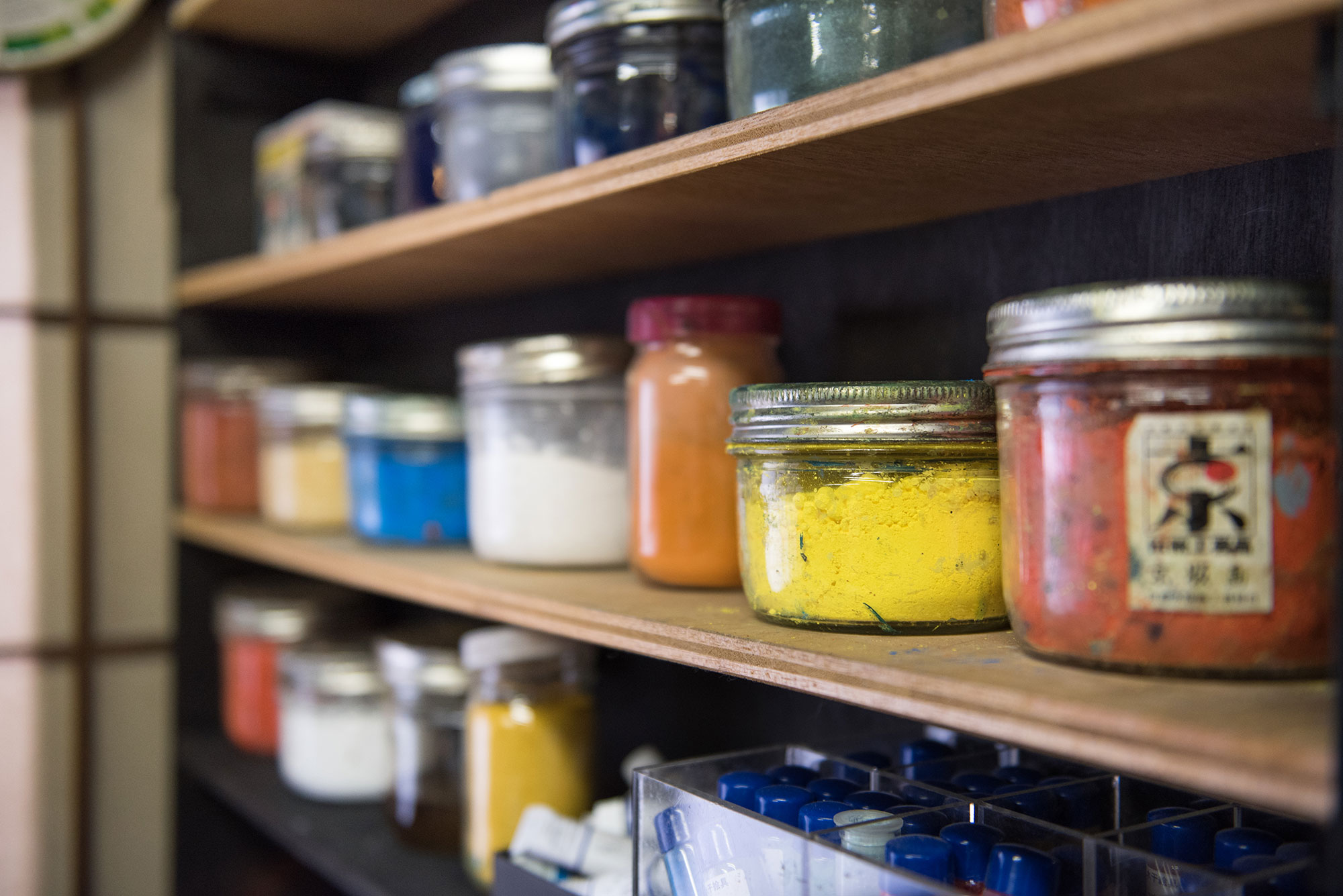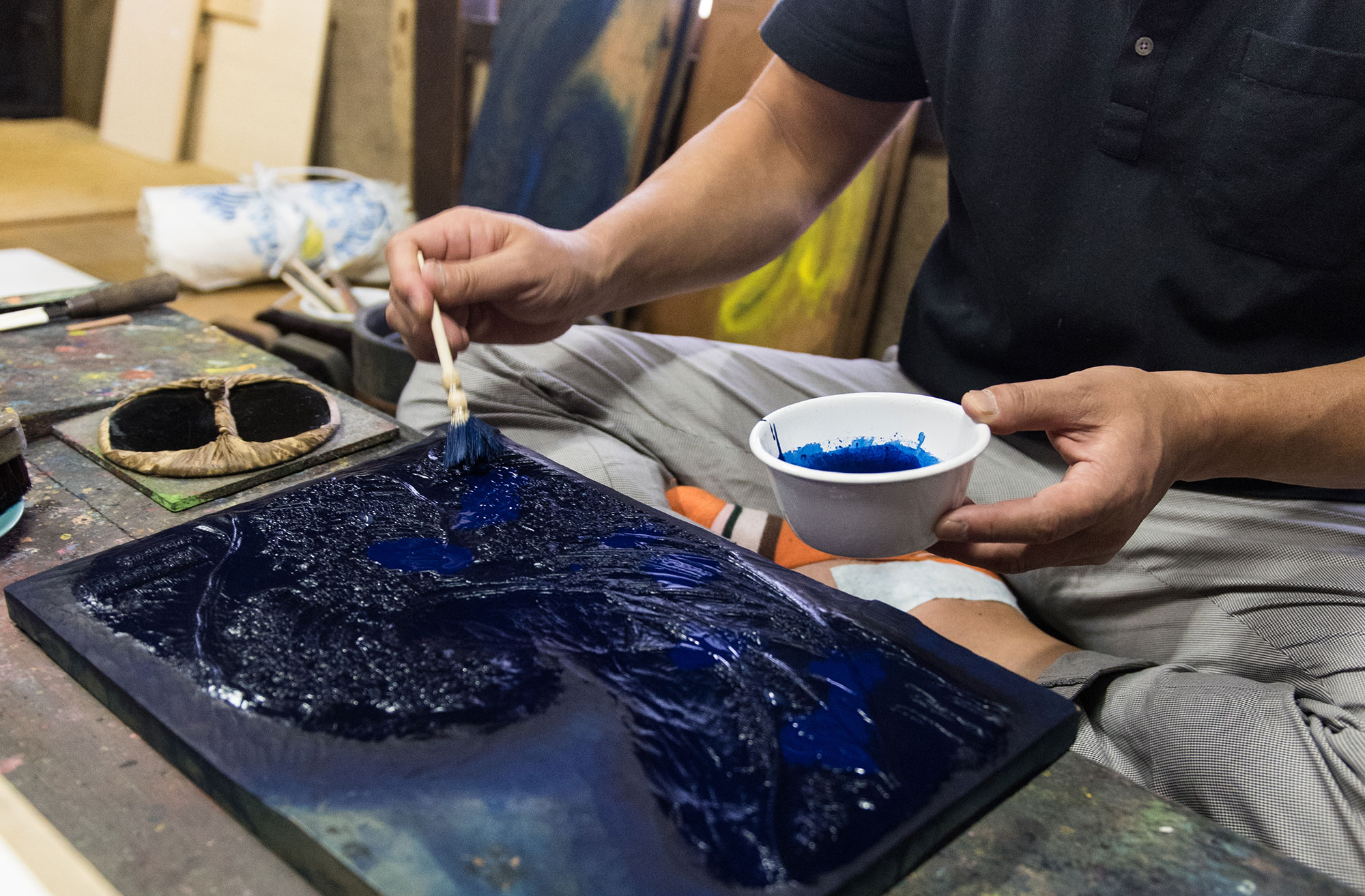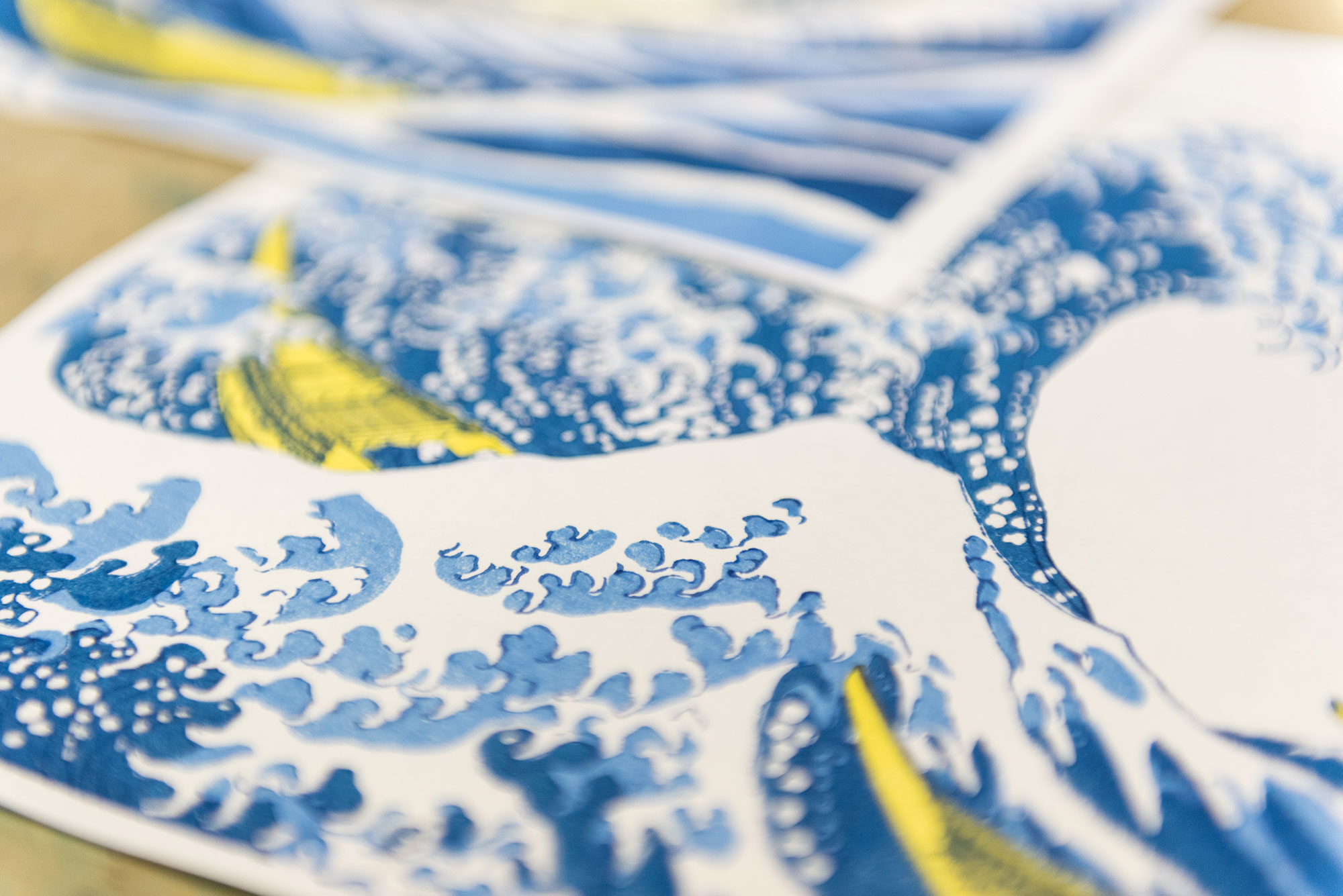My second trip to Kyoto was a whirlwind of art, design, and tradition: I didn’t stop moving for the few days I was there for, taking in everything I could within that short expanse. One moment I was walking through the Nishijin district and in another I was zipping through narrow streets, viewing the city life through the backseat window of a taxicab.
A road only accessible by foot or bicycle led me to the woodblock print studio of Takezasado, where I met my interpreters who would accompany me on the visit. The building looked as though it had been there for more than one hundred years, a sense of beauty in the aged wooden structure. We passed through the noren hanging over our heads in the entrance-way where we then removed our shoes before stepping onto the tatami.
Tea had been prepared for us in the next room where a quaint garden courtyard bloomed just outside the sliding doors, providing a serene setting for our visit. We were informed that Mr. Kenji Takenaka, fifth generation master printer and current representative of Takezasado, would be conducting a woodblock print demonstration for us of revered artist Katsushika Hokusai’s famous ukiyo-e print, The Great Wave Off Kanagawa.
We followed Mr. Takenaka up to the studio workspace, taking a staircase that was so incredibly narrow and inclined that I literally had to climb up it. Minding our heads on the low ceiling we found ourselves in a cozy room with a single window-lit table centered in the back surrounded by various tools, jars of powdered dyes, and a stack of wooden boards.
After explaining the different elements of the ukiyo-e printing process, Mr. Takenaka uses circular motions to brush a rich blue hue across a woodblock made from a Japanese cherry tree. We watched in fascination as he expertly aligned the hosho paper onto the panel using carved guides called kento, placed his hand on the baren tool and began quickly and deliberately guiding the tool in circular motions – thus executing a delicate balance of pressure that one would achieve only after many years of practice.
Lifting the baren up and setting it aside, Mr. Takenaka removed the paper swiftly, flipped it in the air and set it before us. The level of detail in the outline was astounding, as well as the consistency of the ink spread across the paper. He continued this process several more times with the same sheet of paper, each time adding a new element and color until the print was completed, perfectly aligned every time.
His next words shocked me: he stood up from the table and motioned to me saying, “You can try it now, if you like.” I had not anticipated this, so on some measure my inner child felt glee while my adult state was reeling, thinking that these were very expensive tools that I did not wish to break. With some coaxing I found myself sitting where Mr. Takenaka had just moments before, and with his guidance I tried my hand at the outline woodblock – it was exhilarating!
When I lifted the paper up to see how I had done, we all began to laugh because there was a dab of excess paint above Mt. Fuji, to which everyone exclaimed “It erupted!” To say the least, I can now fully understand how mastering the art of printing can take many, many years.
As our visit came to an end, we thanked Mr. Kenji Takenaka profusely for his beautiful ukiyo-e demonstration, to which he replied, “okini.” Having never heard the word before, I turned to my interpreters to inquire. They explained that the phrase is how the people of Kyoto say “thank you,” in their own dialect. With many exchanges of “okini,” we headed down to the Takezasado shop before going our separate ways. The enriching experience and beauty of the art would linger in my thoughts for quite some time.

